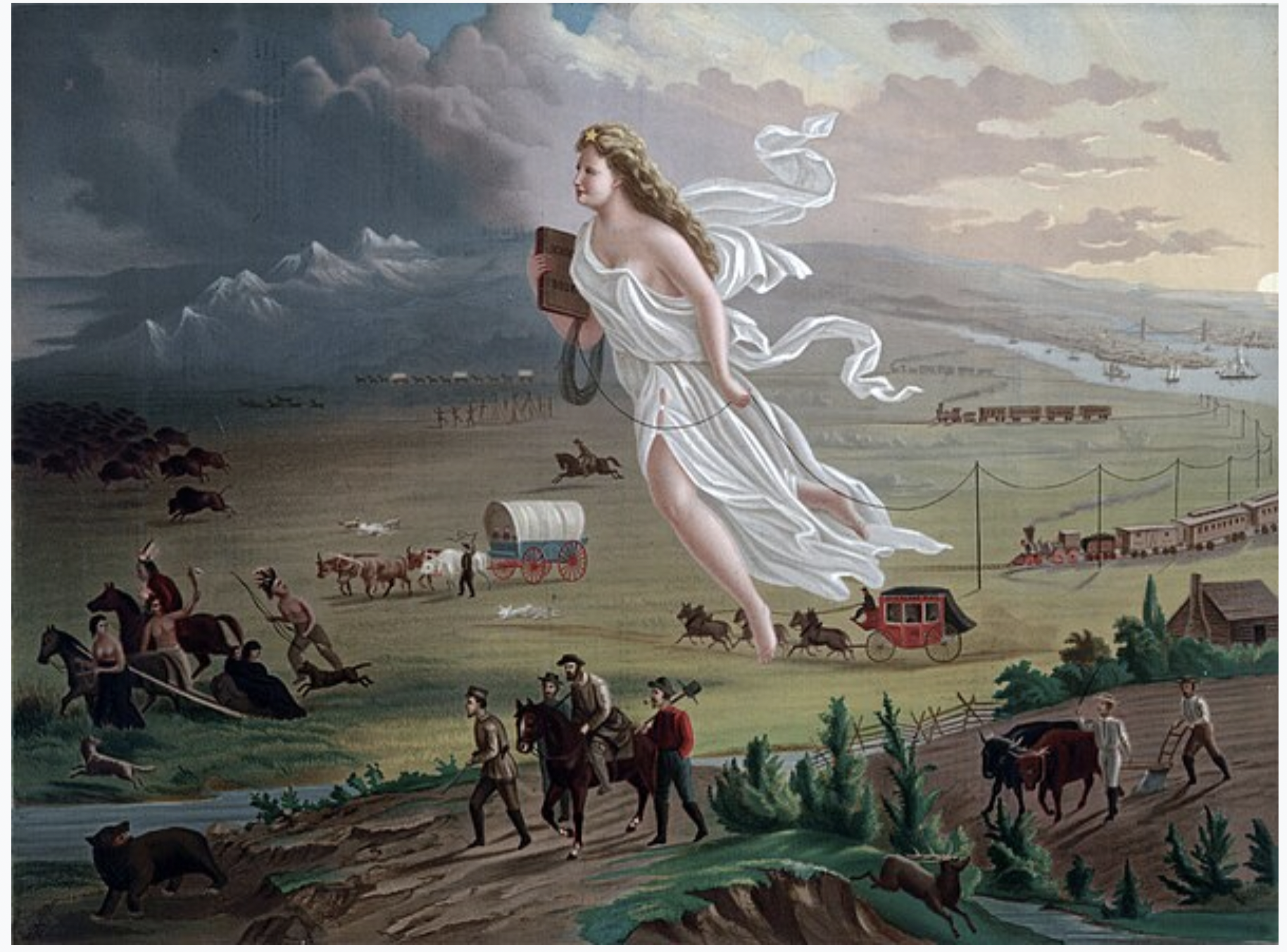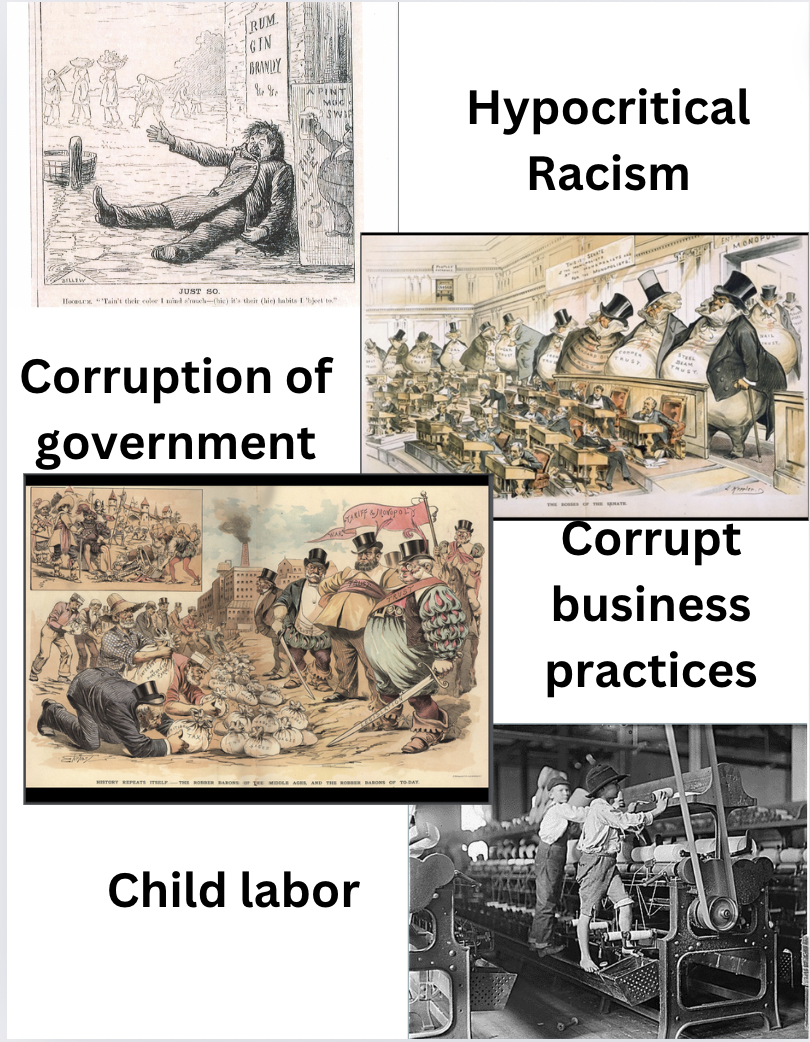History Final
1/138
Earn XP
Description and Tags
Left off on 68
Name | Mastery | Learn | Test | Matching | Spaced |
|---|
No study sessions yet.
139 Terms
What is a federalist system of government (how is power shared)?
State and central(federal) government
Executive- Puts laws into action
Judicial- Decides if laws are constitutional
Legislative- Makes laws
What is republicanism? (how does government work in a republic?)
A type of government where the people are ruled by elected representatives
What is “separation of powers” and why is it necessary?
The separation of branches of government so that no one branch is too powerful. Allows for checks and balances
What idea is an essential part of a capitalist economic system?
open commerce and private property
Who was the President during the Nationalist Era?
James Monroe
Why was Andrew Jackson’s Presidency associated with the “rise of the common people?”
He was born poor(a common man) and became rich and removed property qualifications for voting
What was the Trail of Tears?
Cherokee and other Native Americans were forced by Andrew Jackson from their homes to reservations
It forced the five “civilized” tribes into reservations
The belief that Americans have the God-given right to expand west

Be familiar with the painting “American Progress”—what it shows and what ideas it illustrates.
It shows Americans progressing westward and the wilds running away. It supports westward expansion and Manifest Destiny. the woman in the middle is Columbia
What did the Missouri Compromise say and do?
admitted Missouri as a slave state and Maine as a non-slave state. It also created the 36’ 30’ parallel
25. What did the Kansas-Nebraska Act say/do?
Repealed the Missouri Compromise and allowed states to vote on whether to be free or slave and caused bleeding Kansas.
What did the Compromise of 1850 say/do?
Ammented fugitive slave act. admitted California as a free state, but also admitted Utah and New Mexico as slave states
Where was the first conflict in the Civil War?
Fort Sumpter, SC
29. What state seceded after the Battle at Fort Sumter?
What state split in two parts over differences in the Civil War? What state was created by this split?
The split in Virginia created West Virginia
Where was the capital of the Confederacy for the majority of the war?
Richmond, Virginia
What battle was the bloodiest single-day battle in the Civil War?
Battle of Antietam
35b. How did the Emancipation Proclamation change the purpose of the Civil War?
It made the war about slavery, not just unity
37b. What is The Gettysburg Address’ key message?
The US had to exemplify the idea that all men are created equal, “by the people for the people”
Who was Andrew Johnson?
The President after Lincoln’s death and was tough on the South. He thought African Americans couldn’t be in power.
What was the Freedman’s Bureau?
A government program that protected poor whites and freed slaves after the war by giving them jobs
What was the name given to Northerners who came South after the Civil War?
carpetbaggers
It removed the military from the South and gave slave states the right to do as they pleased if they stopped denying voting rights to people based on color
What were Black Codes?
Laws for African Americans that restricted their rights and ensured white supremacy
How did the Jim Crow Era affect African Americans in the South?
It separated white people from black people and gave limited their voting rights
What did Plessy v. Ferguson say and do?
Allowed Jim Crow segregation, “Separate but equal”
The US is amazing looking from the outside but is horrible on the inside
What inventions helped cities build vertically?
The elevator and the Bessemer Process
Corporate
Big corporations, such as Standard Oil, that use unethical business practices to get what they want
What type of integration did Rockefeller use?
Horizontal integration
Vertical integration
54. What is laissez-faire government?
the government being “hands-off” in the economy
How does laissez-faire government relate to the government and business in the Gilded Age?
The government was laissez-fair, which led to monopolies
Be able to identify elements of political cartoons as well as other images related to the Gilded Age

Who was Ida B. Wells and what things did she do?
She researched lynching and founded the NAACP
Know the difference between the ideas and accomplishments of Booker T. Washington and W.E.B. DuBois.
Washington- president of Tuskegee University and believed African Americans should integrate slowly
W.E.B. DuBois- Helped found the NAACP and believed that African Americans should integrate ASAP
What president led us into the Spanish-American War?
William McKinley
Under whose presidency was the Panama Canal built?
Theodore Roosevelt
Define/explain the acronemn MANIA
M is for militarism: A policy of building up and strengthening a military for war and using it as a tool for diplomacy.
A is for Alliances: agreements between nations to provide and protect each other
N is for nationalism: extreme pride in one’s own country.
I is for imperialism: extreme pride in one’s country when it takes over another.
A is for assassination: the assassination of Austrian Archduke, Franz Ferdinand
What were some of the new military technologies used during WWI?
Trench warfare, mustard gas, semi-automatic guns, airplanes
Who was the U.S. President during WWI?
Woodrow Wilson
What was the Zimmerman telegram and how did it affect U.S. involvement in WWI?
A telegram sent from Germany to Mexico saying that if peace wasn’t kept with the US, Mexico could fight with Germany in exchange for New Mexico, Texas, and Arizona. It made the US declare war
What were the Fourteen Points?
Wilson’s plan to create peace by making the League of Nations, create freedom of the seas, and that countries should create their own government
Who said that the “business of America is business?” What does this mean?
President Calvin Coolidge said the prosperity of America depended on it’s business
How did we characterize the Roaring ‘20s?
A challenge to traditional values
What is installment buying and how was it a cause of the Great Depression?
Installment buying was agreeing to pay for something later. It caused many people to go into debt especially because of interest
Who were Sacco and Vanzetti and why was their trial so famous?
It convicted two Italians who had no connections to the crime at the time
Who was John Scopes? What crime was he charged with?
He was a teacher who taught evolution to protest the separation of church and state
What groups did the KKK target beginning in the 1920s?
All foreigners and non-protestants
What is the Red Scare?
A societal fear of communists and radicals in the 20’s and 50's